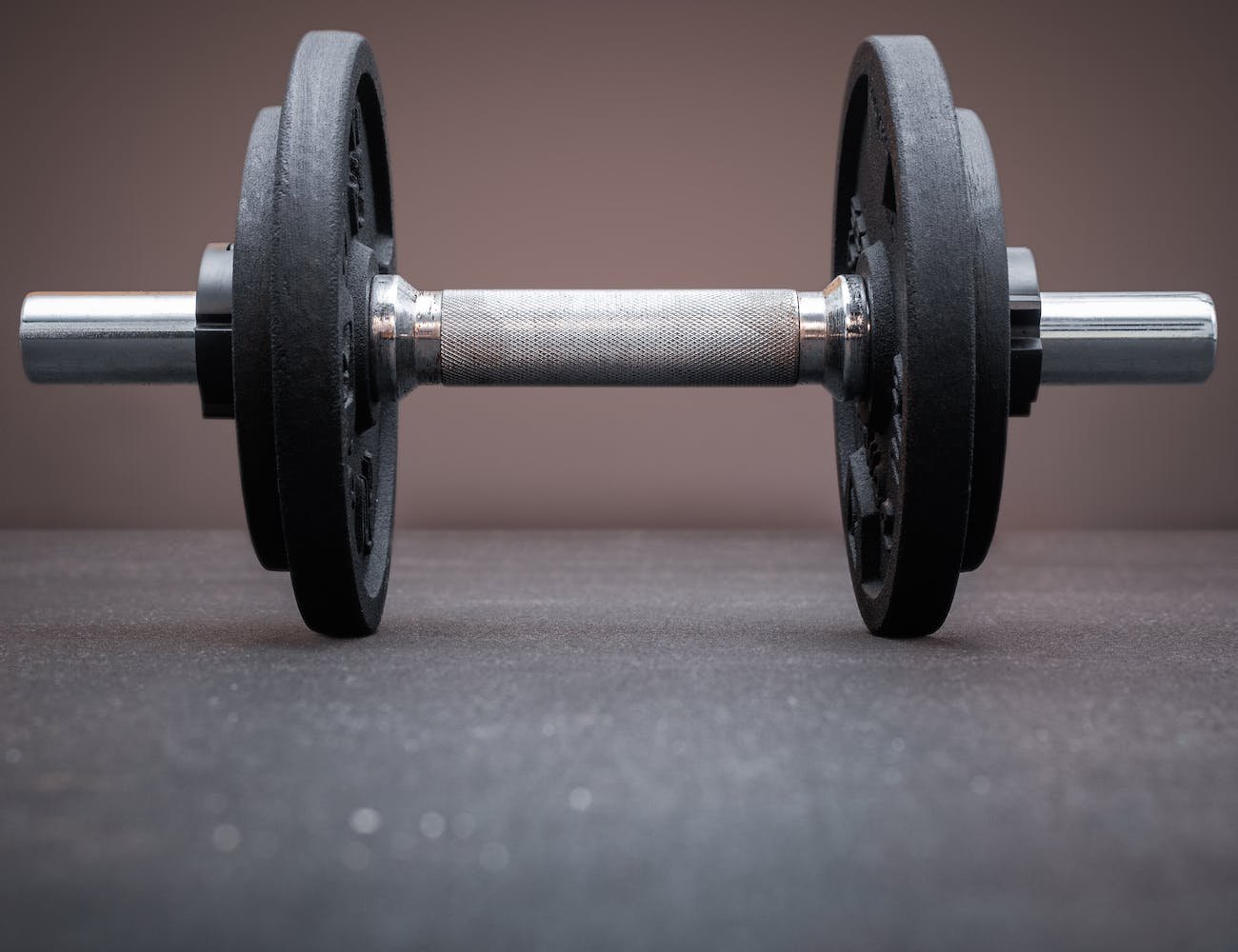
Burn Fat, Build Muscle: The Ultimate Guide to Strength Training for Weight Loss
Is the quest for a leaner, stronger physique a Sisyphean task, or is there a method to the madness that can lead us to the summit of our fitness goals? As someone who’s navigated the labyrinth of health and fitness advice, I’ve learned that the key to shedding those stubborn pounds while building muscle isn’t found in a fad diet or a miracle pill.
It’s nestled firmly in the grasp of strength training—a tried and true cornerstone that, when executed correctly, can transform your body. But the journey doesn’t end at knowing strength training is effective; it demands a deeper understanding of how to tailor it to your unique needs for weight loss.
In the chapters that follow, I’ll demystify strength training myths, guide you in designing a workout plan that syncs with your lifestyle, and reveal how to fine-tune your nutrition for optimal results. The path to a leaner, muscular body is fraught with challenges and misconceptions, but I’m here to walk you through it, ensuring that every lift and lunge propels you closer to your goals.
So, let’s explore how the right approach to strength training can be your ally in the battle against the bulge and the forge for a stronger you.
Understanding the Basics of Strength Training
To harness the transformative power of strength training for weight loss, we must first grasp its fundamental principles and techniques. It’s not just about lifting weights; it’s a path to freedom from the constraints of stubborn fat and underdeveloped muscles. By understanding the right way to engage in strength training, I’m unlocking the door to a fitter, more empowered self.
Let’s dive into the essentials. Strength training involves exercises that build muscle strength and endurance. It’s critical to select the right training equipment for your journey. This can range from free weights like dumbbells and kettlebells to resistance bands and machines. Each piece of equipment offers unique benefits, and incorporating a variety of tools can lead to more effective workout variations.
I’m not just talking about doing the same routine over and over. To truly benefit from strength training, I’ve learned to mix up my workouts, challenging my muscles in new ways. This could mean switching from barbell squats to lunges or trying out a new machine. The beauty of workout variations is that they prevent plateaus and keep the body guessing, which can lead to more significant weight loss and muscle gains.
In my experience, a well-rounded strength training program includes compound movements like deadlifts, bench presses, and rows. These exercises work multiple muscle groups at once, boosting my metabolic rate and increasing caloric burn. They’re the cornerstone of a solid strength training regimen.
To those yearning for freedom from excess weight, remember that strength training is a powerful ally. With the right knowledge, equipment, and variations, you’re not just lifting weights – you’re lifting yourself towards a healthier, more liberated life.
Debunking Strength Training Myths
While embracing the essentials of strength training is crucial, it’s equally important to shed light on the pervasive myths that can hinder progress and distort understanding. Let’s break free from these misconceptions and empower ourselves with the truth about building muscle and losing fat.
Here are four muscle myths that need busting:
- Myth: Lifting Weights Makes You Bulky
This is one of the most common muscle myths. Women, in particular, are often hesitant to lift heavy for fear of becoming too muscular. The reality is, gaining significant muscle mass requires intense training and a specific diet. For most, strength training leads to a toned and lean physique, not bulkiness. - Myth: You Must Train Every Day
Concerning training frequency, more isn’t always better. Your muscles need time to repair and grow, which happens during rest. Training three to four times a week can be highly effective, allowing for recovery and preventing burnout. - Myth: Strength Training Doesn’t Burn Fat
On the contrary, lifting weights increases muscle mass, which boosts metabolism even at rest. This means you’ll be burning calories long after you’ve left the gym. So strength training is a powerful tool for weight loss. - Myth: Machines Are Safer Than Free Weights
Both machines and free weights have their place in a balanced training program. Free weights can lead to greater gains in strength and muscle coordination when used correctly. It’s all about proper form and technique, not the equipment itself.
Designing Your Weight Loss Workout Plan
Crafting a weight loss workout plan requires balancing various exercises that not only burn calories but also build muscle to enhance your metabolism. It’s about creating a routine that resonates with your lifestyle, giving you the freedom to progress without feeling chained to unrealistic expectations.
First, let’s talk about Equipment Selection. You don’t need a gym full of gear to get started. A set of dumbbells, resistance bands, or even your body weight can pave the way for effective strength training. Choose equipment that you’re comfortable with and that challenges you enough to see progress over time.
Next, consider your Workout Frequency. It’s not about overdoing it; it’s about consistency. Aim for strength training exercises at least 3 times a week to start. This frequency allows your muscles to recover and grow stronger, propelling your weight loss journey forward. Remember, rest days are just as crucial as workout days for achieving your goals.
As for the workouts themselves, mix it up with compound movements like squats, deadlifts, and bench presses that work multiple muscle groups simultaneously. This approach maximizes fat burn and muscle building. Don’t shy away from isolation exercises either; they can fine-tune specific muscles and contribute to your overall physique.
Keep track of your progress and don’t be afraid to adjust your plan as you evolve. Your body will adapt, and what once was challenging will become easier. That’s your cue to up the ante, either with more weight, increased intensity, or additional sets.
Optimizing Nutrition for Fat Loss and Muscle Gain
Fueling your body with the right nutrients is just as essential as the workout itself when aiming to shed fat and build muscle effectively. Proper nutrition is the cornerstone that can propel me towards my goals with an intensity that no amount of training can match on its own.
Let’s dive into how I can optimize my nutrition for simultaneous fat loss and muscle gain:
- Understand Macronutrient Balance:
Each meal should be a careful balance of proteins, carbs, and fats. Proteins are crucial for muscle repair and growth, carbs fuel my workouts, and fats support hormone health. I aim for a split that complements my activity level and body composition goals. - Master Meal Timing:
I time my meals to leverage their impact. For instance, eating a protein-rich meal post-workout aids in muscle recovery. I also spread my meals evenly throughout the day to maintain energy levels and keep hunger at bay. - Choose Quality Over Quantity:
It’s not just about calories. I focus on nutrient-dense foods that provide vitamins, minerals, and antioxidants. These help reduce inflammation and support overall health, which is vital for recovery and weight management. - Stay Hydrated:
Water is often overlooked, but it’s a key player in metabolism and helps suppress appetite. I ensure I’m well-hydrated throughout the day to aid in fat loss and improve my performance in the gym.
Exploring Compound Vs. Isolation Exercises
To maximize my weight loss and muscle-building efforts, it’s essential to understand the distinct advantages of incorporating both compound and isolation exercises into my fitness routine. Compound exercises are my power moves; they involve multiple muscle groups and joints, leading to higher muscle activation and calorie burn. Think of them as my multi-taskers, giving me a bang for my buck in the gym.
Isolation exercises, on the other hand, are my sculptors. They target a single muscle group, allowing me to focus on specific areas that I want to define or strengthen. It’s the attention to detail in my workout that can really make those muscles pop.
I’ve found that striking a balance between these two types of exercises provides not only workout variety but also ensures that I’m working my body in a comprehensive way. Check out this table that captures the essence of what each type of exercise brings to my fitness journey:
| Compound Exercises | Isolation Exercises |
|---|---|
| Promote overall strength | Enhance muscle definition |
| Maximize calorie expenditure | Allow precise muscle targeting |
| Foster functional fitness | Aid in muscle recovery |
Feeling the rush of conquering a heavy deadlift or the burn of a focused bicep curl is liberating. It’s about having the freedom to choose my path to fitness. I’m not just losing weight or building muscle; I’m creating a body that’s capable, strong, and uniquely mine. Let’s not forget, every rep, every set, is a step toward my independence. So, I dive into my workouts with passion, knowing that each compound and isolation exercise I perform is a building block for my success.
The Role of Rest and Recovery
Rest and recovery aren’t just breaks in your routine; they’re integral to your weight loss success through strength training. I can’t stress enough how critical it’s to give your body the downtime it needs to repair and strengthen, especially when you’re pushing your limits.
A good night’s sleep does wonders for your training, as it’s when the most significant muscle rebuilding occurs.
Importance of Downtime
Amidst the rigorous demands of strength training, it’s essential we prioritize rest and recovery to catalyze weight loss and enhance muscle rebuilding. To keep our bodies primed for progress, downtime isn’t just a luxury; it’s a necessity.
Here’s why it’s crucial:
- Active recovery aids in repairing tissues damaged during workouts, making it a cornerstone of a successful regimen.
- Adequate rest prevents overtraining syndrome, ensuring I’m ready to tackle each session with vigor.
- Sleep is a key player in hormone regulation, which is pivotal for both stress management and fat loss.
- Mental breaks enhance focus and motivation, keeping my freedom-loving spirit engaged in the long-term journey towards health and vitality.
Sleep’s Impact on Training
Building on the foundation of downtime, let’s explore how sleep, the unsung hero of rest and recovery, profoundly shapes our strength training outcomes and weight loss success. Optimal sleep quality isn’t just a luxury—it’s crucial for smashing those fitness goals. When I prioritize my zzz’s, I’m really fine-tuning my body’s ability to burn fat and build muscle. It’s all about syncing with my circadian rhythms to maximize recovery and energy levels.
| Factor | Impact on Training | Tips for Improvement |
|---|---|---|
| Sleep Duration | Enhances muscle repair | Aim for 7-9 hours nightly |
| Sleep Quality | Boosts growth hormone levels | Keep a consistent schedule |
| Circadian Rhythms | Optimizes metabolic processes | Get morning sunlight |
| Nighttime Routine | Reduces sleep disturbances | Limit evening screen time |
Tracking Progress and Adjusting Your Regimen
As we continue our journey, it’s essential to keep a keen eye on our milestones to ensure we’re on the path to weight loss success.
I’ll guide you through refining your routine, making sure it’s tailored to your evolving fitness levels and goals.
Together, we’ll assess the physical changes, celebrating your victories and tweaking your program for maximum results.
Monitor Your Milestones
Tracking your milestones is crucial to recognizing the progress you’ve made and ensuring your strength training regimen remains aligned with your weight loss goals. It’s about hitting those progress benchmarks and earning the right to a milestone celebration.
Here’s how I stay on top of my game:
- Set Clear Progress Benchmarks: Every few weeks, I check my strength levels, body measurements, and endurance.
- Log Workouts and Nutrition: I keep a detailed journal to note changes and patterns.
- Milestone Celebration: When I hit a target, I reward myself. It could be new workout gear or a rest day.
- Adjust as Needed: If I’m not seeing results, I tweak my routine. It’s about freedom, not rigidity.
Refine Your Routine
Refining your strength training routine is like sharpening a blade; it enhances your efficiency and effectiveness in achieving weight loss goals. I’m constantly tracking my progress and adjusting my regimen to ensure I’m on the right track. Progressive overload is key; I strive to gradually increase the weight or reps to challenge my muscles and burn more fat.
| Aspect | Adjustment Strategy |
|---|---|
| Weight Used | Increase incrementally |
| Reps | Add more gradually |
| Training Frequency | Adjust weekly |
| Exercise Variety | Rotate regularly |
I’m motivated to tweak my training frequency to find the sweet spot for muscle recovery and growth. Remember, it’s about sculpting a lifestyle that resonates with freedom, not just a routine. Let’s keep pushing the limits and redefine what our bodies can do!
Assessing Physical Changes
While refining your routine sharpens your performance, regularly assessing physical changes ensures you’re sculpting the body you desire through strength training. Here’s how I keep track of my progress:
- Body Composition: I use dual-energy X-ray absorptiometry (DEXA) scans to get a detailed picture of my fat, muscle, and bone density.
- Scale: While it doesn’t tell the whole story, it’s a quick way to monitor weight changes.
- Measurement Techniques: I take weekly measurements of my waist, hips, and other areas to see where I’m losing fat and gaining muscle.
- Fitness Tracker: Wearing a device that monitors my workouts helps me see improvements in my endurance and strength over time.
I adjust my regimen whenever my progress plateaus, ensuring I’m always moving towards the freedom of a healthier, stronger body.
Staying Motivated and Overcoming Plateaus
Nearly everyone hits a plateau during their weight loss journey, but don’t let it dampen your spirit; it’s a common obstacle that you can overcome with the right strategies and mindset. Training plateaus are like uninvited guests who overstay their welcome – a sign that your body has adapted to the regimen and it’s time for a change-up.
Here’s where motivation strategies are crucial. I keep my focus razor-sharp by setting small, achievable goals that lead to the larger objective. It’s about celebrating the little victories on my way to the grand prize.
I’ve learned to listen to my body and understand that plateaus are a natural part of the process. When progress stalls, I shake up my routine. Maybe I’ll increase the weights, change my sets and reps, or introduce new exercises to challenge my muscles in different ways. This not only reignites the physical progression but also renews my mental engagement.
Staying motivated means seeking inspiration. I follow fitness enthusiasts who’ve overcome their own plateaus, drawing energy from their stories. I also keep a workout journal, tracking improvements that aren’t always visible in the mirror, like better endurance or increased strength.
Overcoming plateaus is about resilience. I’ve learned to embrace the journey, with all its ups and downs, as part of my quest for freedom – freedom from the weight that I once let define me. Now, I define my path with every rep, every set, and every healthy choice. With perseverance and the right approach, I know I’ll keep moving forward, one powerful step at a time.
Frequently Asked Questions
How Do Genetics Influence the Efficacy of Strength Training for Weight Loss and Muscle Gain?
I’ve learned that genetic testing can reveal muscle phenotypes, showing how my body responds to strength training, which helps tailor my workouts for optimal weight loss and muscle gain. It’s empowering knowledge!
Can Strength Training Improve Mental Health or Cognitive Function While Aiding in Weight Loss?
I’ve learned that 80% of people feel happier after lifting weights! Strength training isn’t just for weight loss; it boosts mood elevation and stress reduction, freeing your mind as you transform your body.
How Does Hormonal Balance Affect the Ability to Burn Fat and Build Muscle, and Can Strength Training Help Regulate Hormones?
Hormonal balance is key for losing fat and gaining muscle. I’ve found strength training helps regulate hormones effectively. Don’t forget, diet impacts this too, so consider hormone testing to tailor your approach. Go for it!
Are There Specific Strength Training Considerations for Individuals With Chronic Conditions (Like Arthritis, Osteoporosis, or Heart Disease) Looking to Lose Weight and Gain Muscle?
Absolutely, I must prioritize safety and consider specialized adaptations when strength training with chronic conditions. It’s possible to gain muscle and lose weight, but I’ll always respect my body’s limits and needs.
How Can I Incorporate Mindfulness or Meditation Practices Into My Strength Training Routine for Enhanced Weight Loss and Muscle-Building Results?
To boost my gains, I’ve started mindful lifting, focusing on each rep’s sensation. I also weave breathwork techniques into my rests, calming my mind, aligning my body, and enhancing my muscle-building journey.
Conclusion
In the end, sculpting your body is like chiseling a masterpiece from marble—it takes precision, patience, and persistence. I’ve armed you with the tools; now it’s your turn to carve out your success.
Remember, every rep is a brushstroke on your canvas of progress. Keep pushing, stay fueled, and rest well.
Your transformation is a work of art in progress, and I can’t wait to see the masterpiece you’ll reveal. Stay strong and keep grinding!
Related Resources
- For dynamic strength training workouts, check out [Dynamic Strength Training Workouts](https://plusfitness.ng/dynamic-strength-training
-workouts/).
- Discover essential equipment for enhancing your home training at Essential Strength Training Equipment.
- Learn about nutrition that complements your strength training at Nutrition for Stronger Training and Muscle Gain Nutrition.
- For those interested in advanced techniques or specific equipment to boost their home workouts, explore Advanced Strength Training Techniques and Effective Home Gym Equipment.




Leave a Reply
You must be logged in to post a comment.